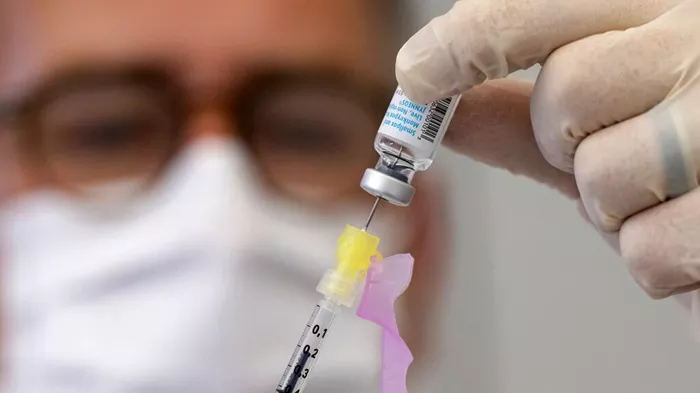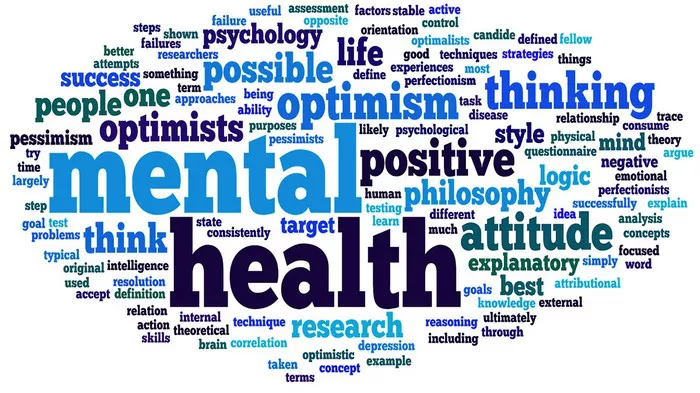Bipolar disorder, a mental health condition characterized by extreme mood swings, affects millions of individuals around the world. Bipolar disorder is primarily classified into two types: Bipolar 1 and Bipolar 2. While both types share similar symptoms, the severity and characteristics differ. In this article, we will focus specifically on Bipolar 2 disorder, exploring how a person with Bipolar 2 thinks, processes emotions, and navigates the world. Understanding the thought processes and experiences of individuals with Bipolar 2 disorder is crucial for fostering empathy, improving communication, and providing better support to those affected.
What is Bipolar 2 Disorder?
Before diving into the specifics of how a person with Bipolar 2 thinks, it’s essential to understand what Bipolar 2 disorder is. Bipolar 2 is characterized by alternating episodes of hypomania and depression. Unlike Bipolar 1, where individuals experience manic episodes, Bipolar 2 involves hypomanic episodes—less intense but still disruptive periods of elevated mood, increased energy, and impulsivity.
A hypomanic episode may not be as extreme as mania, but it can still significantly impact a person’s behavior and decision-making. In contrast, depressive episodes in Bipolar 2 are often deep, prolonged, and debilitating. These episodes can cause feelings of hopelessness, worthlessness, and extreme sadness, making daily functioning difficult.
It is important to recognize that individuals with Bipolar 2 disorder experience fluctuations between these two mood states. The transitions between hypomania and depression can be swift and unpredictable, making it challenging for individuals to maintain emotional stability and cognitive clarity.
Cognitive Experience During Hypomanic Episodes
Hypomania is one of the two key features of Bipolar 2 disorder, and it significantly affects a person’s thinking. During a hypomanic episode, a person may experience an elevated mood, a sense of heightened creativity, and increased energy. These changes in mood and energy levels lead to altered thought processes, and individuals may perceive themselves as more capable, focused, and productive than usual.
1. Racing Thoughts
One of the most noticeable cognitive characteristics of hypomania is racing thoughts. A person may find it difficult to focus on one thought at a time because their mind is constantly jumping from one idea to the next. Thoughts may flow rapidly, and the individual might feel that they are thinking faster than they can express themselves. This can lead to impulsive behavior, as the person may act on these ideas without fully considering the consequences.
2. Grandiosity and Overconfidence
During hypomanic episodes, individuals often experience a sense of grandiosity or inflated self-esteem. They may believe they are invincible or have special abilities that set them apart from others. This overconfidence can lead to risky behavior, as the person may make decisions that are out of character or potentially harmful, such as spending large amounts of money or engaging in impulsive relationships.
3. Increased Focus and Productivity
Although hypomania can cause racing thoughts and impulsivity, it can also lead to increased productivity and focus on specific tasks. Individuals may become intensely focused on creative projects, work, or hobbies. The surge in energy allows them to tackle numerous tasks at once, often with an increased sense of urgency. However, this productivity can be short-lived, as the individual may quickly lose interest once the hypomanic episode subsides.
4. Reduced Need for Sleep
People experiencing hypomania may also have a significantly reduced need for sleep. They may feel energized and rested despite sleeping for only a few hours. This can contribute to further cognitive impairment, as lack of sleep can decrease mental clarity and decision-making abilities over time.
Cognitive Experience During Depressive Episodes
While hypomania leads to a heightened sense of energy and focus, depressive episodes in Bipolar 2 disorder are quite the opposite. During a depressive episode, cognitive functions are often impaired, and individuals may struggle to think clearly or concentrate. The depressive episodes can be debilitating, and the individual’s thinking becomes clouded by negative emotions and thoughts.
1. Cognitive Sluggishness
During depressive episodes, people with Bipolar 2 often experience cognitive sluggishness. Their thoughts may become slow, and it may feel as if their mental processes are moving through molasses. This mental fog can make it difficult to concentrate on tasks, solve problems, or make decisions. It may feel like their brain is not functioning at full capacity, and even simple tasks can become overwhelming.
2. Pervasive Feelings of Worthlessness
One of the most prominent features of depression in Bipolar 2 disorder is the pervasive feeling of worthlessness. People experiencing depression may have negative thoughts about themselves, their abilities, and their value. They may feel like they are a burden to others or that they do not deserve love or success. These thoughts can lead to feelings of guilt, self-blame, and hopelessness.
3. Difficulty with Concentration and Memory
Depressive episodes in Bipolar 2 can impair memory and concentration. Individuals may find it difficult to remember important details or complete tasks they would normally handle with ease. The cognitive fog caused by depression can make it difficult to stay on track, and this cognitive impairment can increase feelings of frustration and anxiety.
4. Suicidal Thoughts and Hopelessness
In severe cases of depression, individuals with Bipolar 2 may experience suicidal thoughts or feelings of hopelessness. The overwhelming sadness and despair can lead them to feel that there is no way out of their suffering. It is essential to recognize that these thoughts are part of the depressive episode and are not a reflection of the individual’s true desires. However, they can be incredibly dangerous, and immediate intervention is necessary if someone is experiencing suicidal ideation.
Cognitive Shifts Between Episodes
One of the unique aspects of Bipolar 2 disorder is the cognitive shifts that occur between hypomanic and depressive episodes. The transitions from one state to another can be jarring and disorienting, both for the individual with the disorder and for those around them. For example, someone who has just emerged from a hypomanic episode may feel mentally exhausted, as the energy and focus they had during the episode are replaced by a sense of emptiness and cognitive fatigue.
Conversely, a person transitioning from depression to hypomania may suddenly feel a surge of energy and clarity, but the abrupt shift can feel unsettling. These transitions are not always predictable, and the rapid changes in mood and cognitive experience can be overwhelming.
The Impact of Cognitive Distortions
Cognitive distortions, or negative thought patterns, are common in both the hypomanic and depressive phases of Bipolar 2 disorder. These distortions can significantly affect how a person perceives themselves and the world around them.
1. Catastrophizing
During depressive episodes, people with Bipolar 2 may engage in catastrophizing, where they expect the worst possible outcome in any given situation. This negative thinking can exacerbate feelings of anxiety and hopelessness, making it harder for the individual to think rationally or solve problems effectively.
2. All-or-Nothing Thinking
All-or-nothing thinking is another cognitive distortion that can be prevalent in Bipolar 2. This type of thinking leads individuals to see situations, themselves, or others in extremes. For example, during hypomanic episodes, a person may feel that they are either the best at everything or completely worthless, with no middle ground. Similarly, during depressive episodes, they may see themselves as either a total failure or a complete success, with little room for nuance or complexity.
3. Black-and-White Thinking
Black-and-white thinking is a form of cognitive distortion that leads individuals to view situations, emotions, and experiences in extremes. For someone with Bipolar 2, this type of thinking may arise during both hypomanic and depressive episodes. For example, during hypomania, they may feel invincible and confident, while in a depressive state, they may believe that nothing will ever improve, and their situation is hopeless.
How Cognitive Experiences Impact Daily Life
The cognitive experiences associated with Bipolar 2 disorder can significantly impact daily life. During hypomanic episodes, the heightened energy and creativity may lead to positive outcomes, such as increased productivity or a surge in artistic expression. However, the impulsivity and lack of focus can also result in negative consequences, such as poor decision-making, risky behavior, or damaged relationships.
During depressive episodes, the cognitive sluggishness, negative thought patterns, and lack of concentration can make it difficult to fulfill responsibilities, maintain social connections, or engage in self-care. The overwhelming feelings of worthlessness can make it challenging to maintain motivation or engage in activities that once brought joy.
Conclusion
In summary, Bipolar 2 disorder affects the way individuals think, process emotions, and make decisions. The cognitive experiences of people with Bipolar 2 are shaped by alternating episodes of hypomania and depression, each of which has its unique impact on thinking and behavior. During hypomanic episodes, individuals may experience racing thoughts, grandiosity, and increased productivity, while depressive episodes often lead to cognitive sluggishness, feelings of worthlessness, and difficulty concentrating.
The cognitive distortions, such as catastrophizing, all-or-nothing thinking, and black-and-white thinking, can further complicate an individual’s ability to navigate their thoughts and emotions. Understanding these cognitive experiences is vital for fostering empathy and providing better support to individuals living with Bipolar 2 disorder. Through awareness, education, and open communication, we can help create a more supportive and understanding environment for those affected by this condition.
Related Topics
































